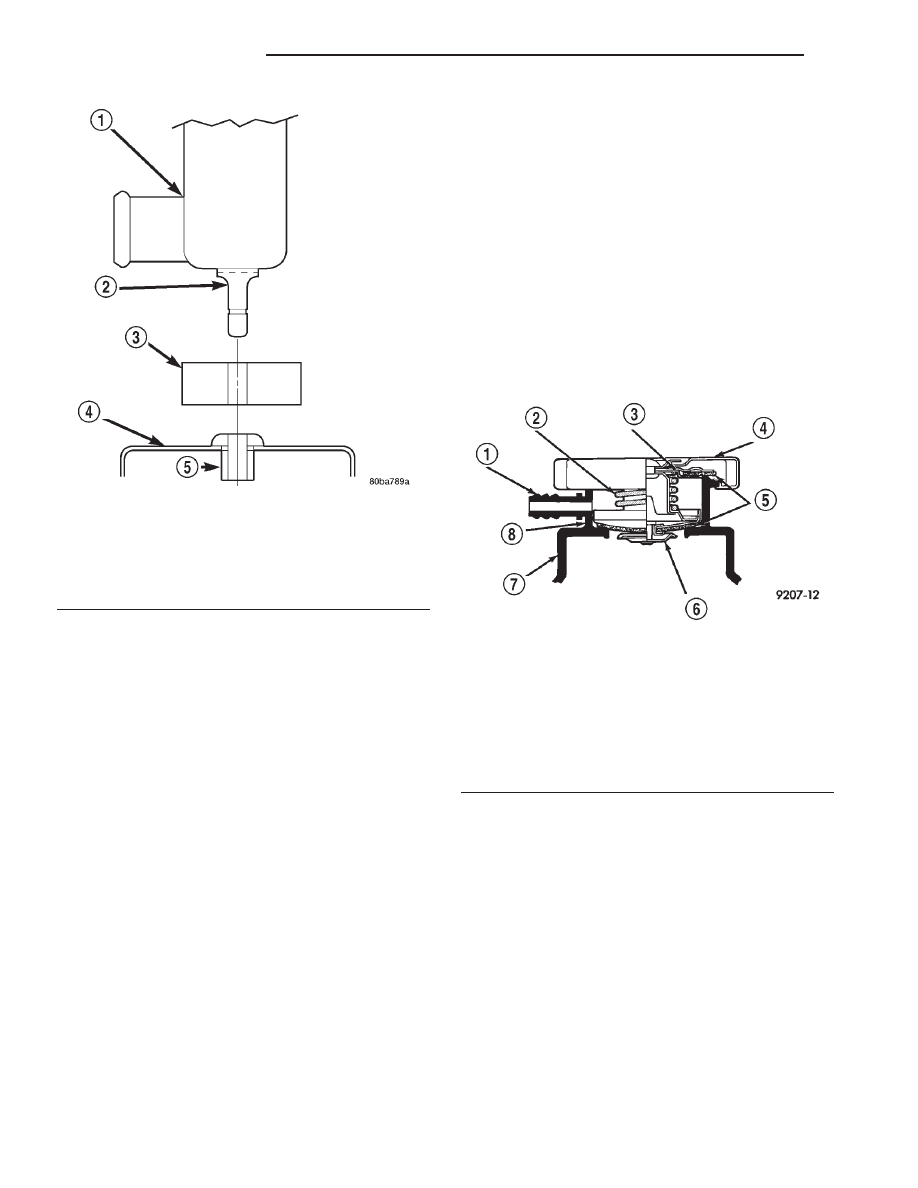Dodge Dakota (R1). Manual - part 268

RADIATOR COOLANT FLOW
CHECK
DIAGNOSIS AND TESTING - RADIATOR
COOLANT FLOW
There is coolant flow through the coolant tank (bot-
tle) before and after the thermostat opens.
CAUTION: Do not remove the vent valve to insert a
temperature gauge thought the opening , coolant
will spill out of the system and the engine will not
be filled with coolant up to the heads. Major dam-
age could happen if you run the engine in this con-
dition.
RADIATOR PRESSURE/VENT
CAP
DESCRIPTION
The pressure/vent cap is threaded-on to the coolant
tank. This cap releases excess pressure at some point
within a range of 90-117 kPa (13- 17 psi). The actual
pressure relief point (in pounds) is labeled on top of
the cap (Fig. 12).
The cooling system will operate at pressures
slightly above atmospheric pressure. This results in a
higher coolant boiling point allowing increased radi-
ator cooling capacity. The cap (Fig. 12) contains a
spring-loaded pressure relief valve. This valve opens
when system pressure reaches approximately 110
kPa (16 psi).
When the engine is cooling down, vacuum is
formed within the cooling system. To prevent collapse
of the radiator and coolant hoses from this vacuum, a
vacuum valve is used within the cap. This valve pre-
vents excessive pressure differences from occurring
between the closed cooling system and the atmo-
sphere. If the vacuum valve is stuck shut, the radia-
tor and/or cooling system hoses will collapse on cool-
down.
NOTE: Do not use any type of tool when tightening
the cap. Hand tighten only (approximately 5 N·m or
44 in. lbs.) torque.
DIAGNOSIS AND TESTING - RADIATOR
PRESSURE CAP
Remove the cap from the coolant tank. Be sure
that sealing surfaces are clean. Moisten rubber gas-
ket with water.
A two-piece, threaded adapter set (Fig. 5) must be
used to adapt a standard pressure-type tester (Fig. 6)
when testing either the coolant tank or pressure cap.
Use Kent-Moore
t adapter set number J-24460-92 or
Snap-On
t numbers TA-32 and TA-33. Attach the
adapter to the cap. Adapter must first be threaded to
cap. Attach pressure tester to adapter.
Fig. 11 Radiator Alignment Dowels
1 - RADIATOR
2 - ALIGNMENT DOWEL
3 - RADIATOR LOWER ISOLATOR
4 - RADIATOR LOWER CROSSMEMBER
5 - RUBBER GROMMET
Fig. 12 Coolant Tank Pressure/Vent Cap
1 - OVERFLOW NIPPLE
2 - MAIN SPRING
3 - GASKET RETAINER
4 - STAINLESS-STEEL SWIVEL TOP
5 - RUBBER SEALS
6 - VENT VALVE
7 - PRESSURE BOTTLE
8 - FILLER NECK
7a - 18
2.5L VM DIESEL
R1
RADIATOR (Continued)